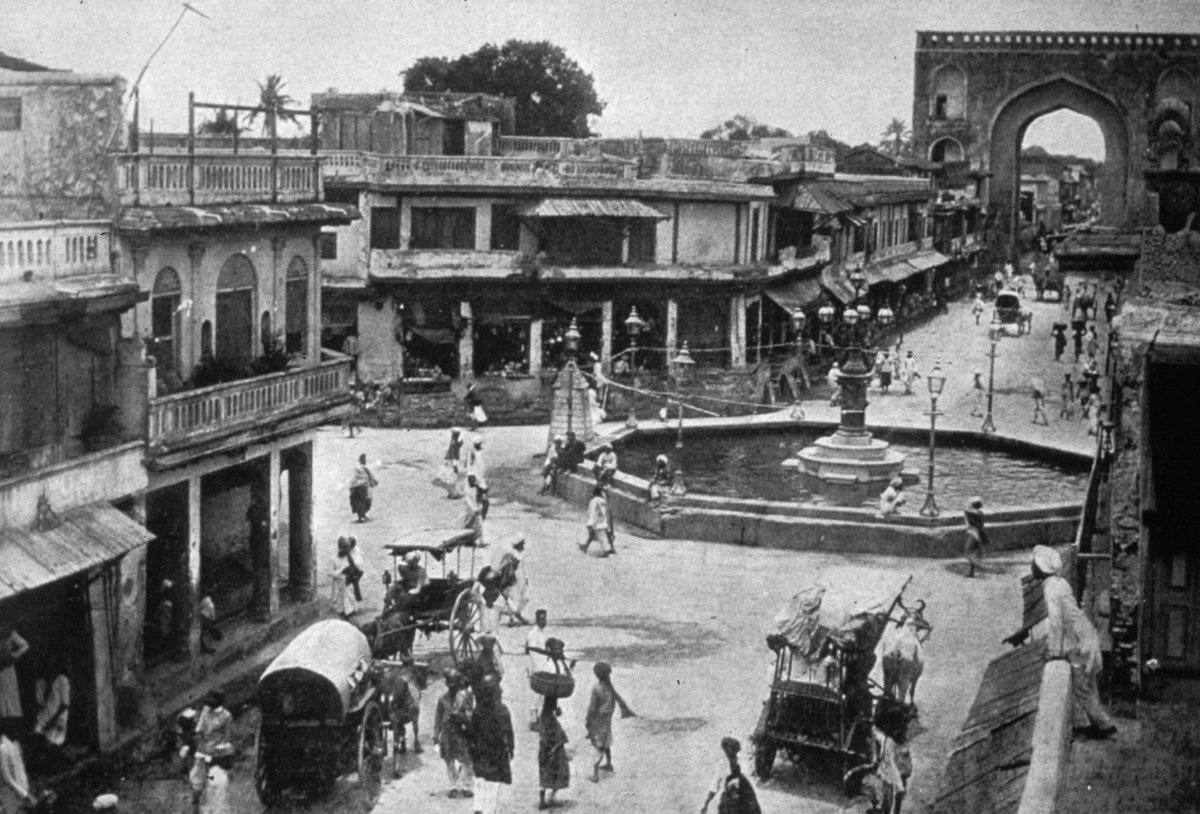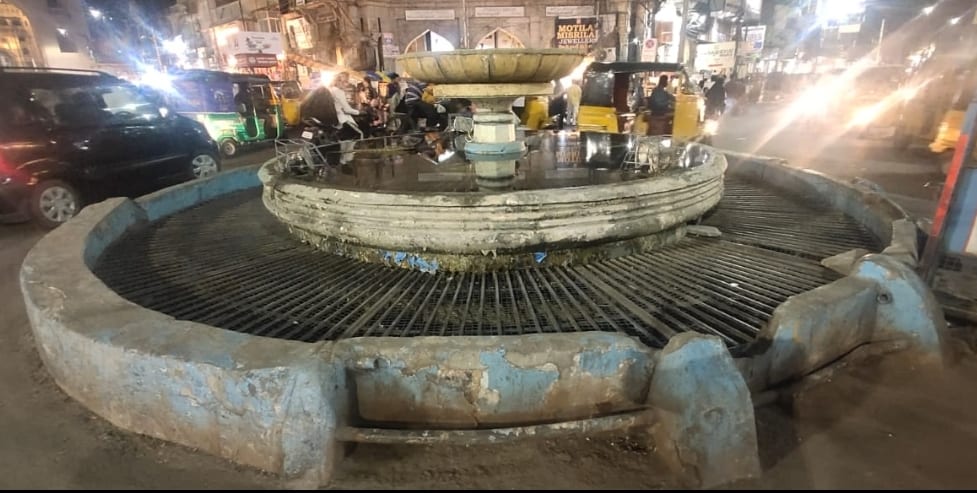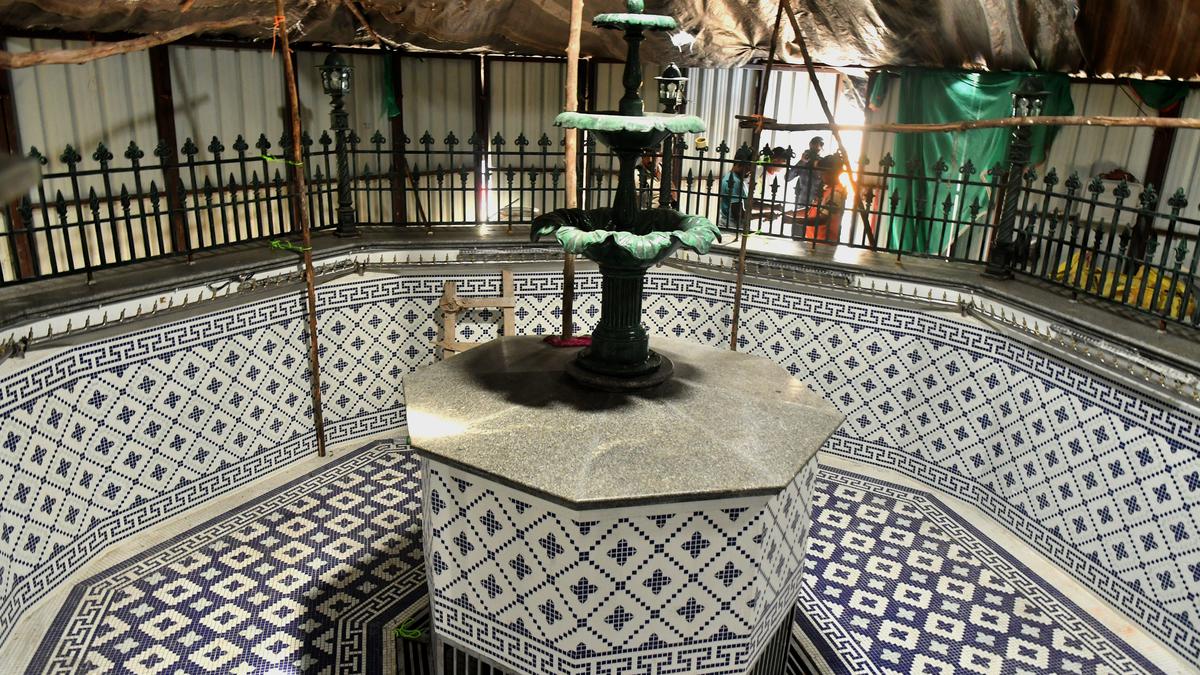The 400-year-old Char-Su-Ka-Hauz, known as the Gulzar Houz fountain, has met its fate as the entire historical site has undergone complete reconstruction. Presently, the structure is barricaded and concealed under a green cloth, hiding the remnants of the once-iconic fountain that was originally constructed during the Qutb Shahi dynasty. The project to reconstruct the fountain has been undertaken by Deccan Terrain Heritage, with supervision from the Quli Qutub Shah Urban Development Authority (QQSUDA).

Source: Twitter
Full Story
Char-Su-Ka-Hauz, meaning the ‘cistern of four cardinal points’, was originally constructed approximately 350 feet away from the four surrounding kamaans. The architectural layout of the structure was meticulously planned by Mir Momin Astarabadi, who served as the first prime minister under Mohammed Quli Qutub Shah’s rule.Comparing archival images from the late 19th century and the 1914 Munn Maps, it is evident that the dimensions of the fountain basin, which used to measure 16 meters in diameter, have significantly reduced to just eight meters.
Source: Siasat.com
In February, a partial dismantling of the fountain sparked rumors of its complete demolition. The Gulzar Houz fountain, which was originally adorned with trees, has a rich historical significance as it is part of a collection of monuments that includes the Char Kaman or the four arches. However, due to issues like littering, it was later converted into a covered fountain. Over time, the fountain has also become a canvas for political slogans and is often decorated with colorful plastic during rallies. Additionally, the ground level surrounding the fountain has been raised by about one foot due to frequent road construction projects.
In response to the criticism, Mir Khan, from Deccan Terrain Heritage and responsible for the project under the MA&UD, defended the chosen approach by explaining that the deliberate decision to use concrete instead of limestone mortar was made due to practical considerations. Khan argued that maintaining a limestone mortar structure would be challenging due to the heavy traffic flow in the area. Instead, they opted to recreate the fountain based on archival images, incorporating the design elements of the Pathergatti parapet wall for the basin. While Khan defended the ongoing work, concerns persisted regarding the utilization of modern materials and techniques in the reconstruction of this historically significant structure.

Source: Siasat.com
Anuradha Reddy, the convenor of the Indian National Trust for Art and Cultural Heritage, shared the importance of the State government implementing systems that guarantee the authenticity of conservation efforts. Expressing her disappointment, she said “When I visited the site, I noticed significant excavation work being carried out, which raised doubts about the true intent of the project. Rather than focusing on restoration, it seemed more inclined towards reconstruction.” Reddy strongly advocated for peer-review processes and the active involvement of stakeholders to ensure the preservation of historical structures’ integrity.
In addition to its architectural significance, the Char-Su-Ka-Hauz fountain also served as a crucial drinking water source for the Qutub Shahi army. Officials from the Quli Qutub Shah Urban Development Authority (QQSUDA) acknowledged that the fountain had fallen into disrepair over the years due to a lack of maintenance, resulting in substantial damage and rendering it non-functional for several decades.

Source: Flipboard
However, efforts are underway to restore its functionality, with the expectation that the fountain will be operational again within the next two months.
Also Read



















































































